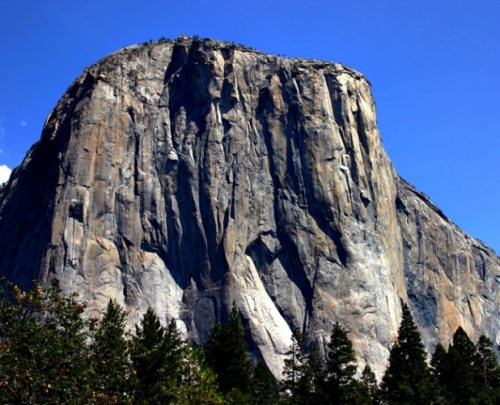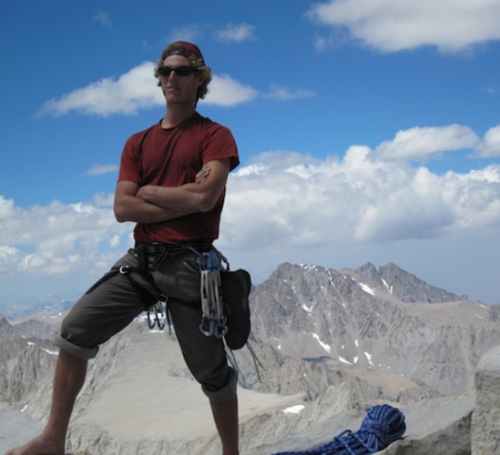Most rock climbers visit Yosemite National Park to conquer El Capitan. UNC grad student Roger Putnam went there to map it. Well, that’s not entirely true, because to map El Capitan, Putnam had to climb it several times. And he had to chisel out samples without ruining the traditional routes that elite rock climbers use to scale the 3,000-foot, sheer wall of granite.
“My biggest hope for the map,” he told National Geographic magazine, “is getting people thinking about the complexity of the granite that makes up Yosemite. I hope it will reveal complex processes happening tens of kilometers below the Earth’s surface.”
Putnam suspended himself thousands of feet from Yosemite’s floor so he could chip off tiny samples of rock no one had studied up close and take them back to his UNC lab.
“I took every effort to sample in a way that could not be noticed by any climbers, because as a climber myself I would be loath to hear of someone chipping away at a route,” Putnam told the magazine. Not only do climbers want the route up a rock to remain the same, but chipping samples could pose problems for climbers beneath Putnam or for hikers at the base.“Even a piece of rock the size of a sugar cube could really hurt someone down below,” he says. “So I couldn’t just hammer away.”
Using the samples, photographs, and laser topographic scans, Putnam and colleagues in the lab of UNC geologist Allen Glazner could build a three-dimensional model of El Capitan, as well as traditional 2-D maps.
The park plans to use the maps, which will supplement the old ones that geologists made after viewing El Capitan through telescopes a hundred years ago. Glazner told National Geographic that the map can help climbers understand the types of rock they’ll confront. Researchers in Switzerland are using the maps to study rockfalls. And the park has plans for Putnam’s research, too.
Park geologist Greg Stock told National Geographic that he wants Yosemite’s park service to make interpretive displays based on the map to show visitors the complex history of the granite and how rockfalls change the face of El Capitan.
Roger Putnam is a master’s student in the lab of Allen Glazner, professor and chair of the Department of Geological Sciences in the College of Arts and Sciences. Their research was supported through grants from the National Geographic Society.




